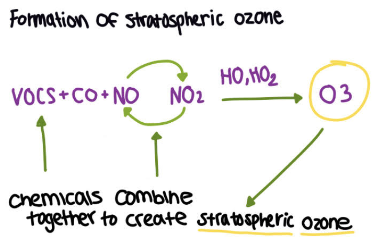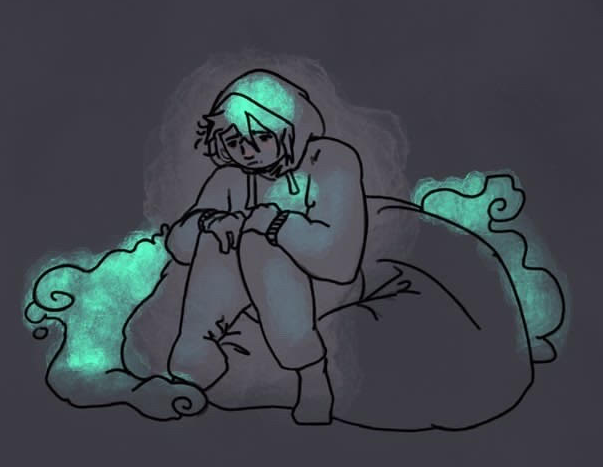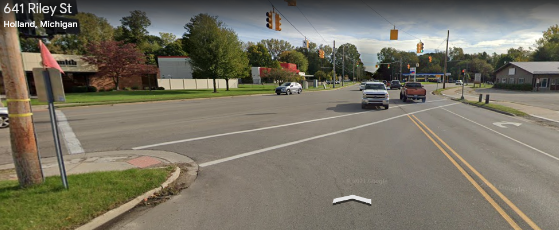The dangers of VOCs in the home
October 4, 2022
Picture this: You and a friend are set in a basement working hard on construction. Air circulation is low, but the construction runs smoothly. Towards the end of the construction you feel sick. You’re tired, you’re nauseous. You shake it off; it was just a long day. You go on with the rest of the week, no second thoughts behind the environment of the project zone. Turns out the construction material contained toxic chemicals known as Volatile Organic Compounds (VOCs). The tiredness and nausea were a direct product of VOCs. These chemicals are common, a similar situation could happen to anyone. It happened to Daniel Blake, a science instructor at West Ottawa High School.
“There was a time that me and a friend of mine were doing construction in a basement and using a construction glue (liquid nails) in order to attach boards to the walls,” said Blake. Liquid nails contain formaldehyde, the most common VOC.
VOCs are a large group of chemicals that photochemically react with the atmosphere to produce ozone. Ozone stays in the stratosphere and humans continuously breathe in the toxic chemicals.

The Environmental Protection Agency (EPA) has regulated VOCs in some household products since 1990 under the Clean Air Act. The EPA has addressed important compliance to these regulations, succeeding in pollutant reductions, and providing safer and cleaner air. However, these regulations are only in place because some architecture and consumer products contain VOCs.
The simple project Blake constructed turned sour without notice. “We had very little air circulation down there. By the end of the day, both of us were very groggy, nauseous, fatigued. We didn’t really think about it in the moment, but looking back on it, it was pretty sketchy,” Blake said.
When exposed to low concentrations of VOCs, people are more likely to have nose and throat irritation, along with headaches, fatigue, and worsening asthma symptoms. When exposed to high concentrations of VOCs, people increase their chances of having cancer, and disrupting the lungs, nervous system, and other organs. The toxic chemicals had directly affected Blake and his friend. They experienced the short-term effects of VOCs.
If VOCs still stand as a problem, why are they still allowed? With no substitutes for VOCs, banning them completely would become disruptive, as too many of our household products contain the chemicals. Instead, there are national and state regulations. Nationally, levels of VOCs are limited. Levels up to 350 parts per billion (PPB) are acceptable in products, but it should not exceed 500 PPB as that causes a high intake of the chemicals. 18 states have adopted stricter restrictions than those set at a federal level. The Lake Michigan Air Directors Consortium (LADCO) is a non-profit air quality research organization. LADCO has made a noticeable difference with their goal of improving air quality near the Great Lakes region by collaborating with federal, state, tribal, and other local agencies. Although strict regulations have been implemented, VOCs are still a problem.
Numerous household products contain both VOCs and other toxic chemicals. It’s better for the environment and for your personal health to use products that are (mostly) free of toxicity.
Paints
Paints are often well-known for containing VOCs. Most paints contain chemicals such as formaldehyde, chloride, methylene, and benzene. These chemicals are harmful to breathe in. When people paint their walls, specifically in a new home, the fresh chemicals from the paint are extremely harmful.
Although most paints contain these harmful chemicals, there are still some eco-friendly paints that are safe for both indoor and outdoor use. Choosing eco-friendly paints is a better option, as they limit your exposure to formaldehyde and other VOCs. Paint is on your walls forever. Non-toxic paints will ensure the safety of you and your family.
New Furniture
Brand new furniture, along with brand new homes, bring high levels of toxic chemicals indoors. The paints and finishes used in new cabinets, walls, flooring, they all play a part as they contain formaldehyde. In fact, 80% of finishes contain some kind of VOC. Alongside this, construction glue, which also contains different VOCs can sometimes put together new furniture. The most dangerous piece of furniture is new carpets. They can be extremely hazardous as some carpets contain styrene. It takes anywhere from six months to five years for the gasses to fully emit from the new furniture. A new home could cost consumers both thousands of dollars, and respiratory issues.
It’s impractical to fully avoid VOCs in new furniture, but levels of these toxic chemicals can be decreased. Purchasing wood without some sort of finish or paint, and creating your own furniture guarantees that there will be less VOCs in your home than someone who bought all of their products from Ikea. Purchasing second hand furniture or reclaimed furniture is always a safe option as well. Although on the expensive side, there are a handful of eco and sustainable furniture companies such as Maiden Home or West Elm that work specifically towards safer furniture without VOCs.
Cleaners and Disinfectants
Each disinfectant includes a list of chemicals. Some you’ve heard of, others sound like a made up word. Regardless of the spelling and pronunciation of the chemicals, it’s important to research the chemicals behind the product. Windex, a common window cleaner, has repeatedly been called out by multiple sources for its toxic chemicals. Two to highlight are tetrachloroethylene, and ethylbenzene. Both are VOCs. When the Windex is sprayed into the air, those chemicals rise and stay within the indoor air. Even after the smell goes away, the chemicals are still present indoors and they’re continuously breathed in for a lengthy period. A less toxic substitute for Windex can consist of rubbing alcohol, vinegar, cornstarch, and water.
Fabric softeners and dryer sheets also contribute. Unfortunately, out of the many toxic cleaners found in homes, chemicals in fabric softeners and dryer sheets come out to be the most toxic. Dryer vents emit over 25 VOCs, a portion of them coming directly from the detergents. At least 25 VOCs are emitted every load of laundry. Eventually, it adds up and the gas emissions remain in homes. Reusable dryer balls are an eco-friendly alternative to fabric softeners. They work similarly to the liquid detergents without emitting any harmful gasses. Plus, they’re reusable, meaning It’s a money saver as well. Another option would consist of not using softeners altogether as they’re unnecessary.
Personal Care Products
Acetone. It’s used as a solvent to manufacture plastics and more industrial products, it’s found in waxes, upholstery fabrics, nail polish remover, and so forth. Acetone is both a common chemical in industrial production, and a common VOC.
Acetone is obviously used frequently as a nail polish remover. Not only does acetone contribute to photochemical smog, but acetone also has its own health defects apart from those produced by VOCs in general. Breathing in more than the normal amount of acetone may contribute to low-blood pressure, abdominal pain, breathing difficulties, abbreviated menstrual cycles and much more. A safe alternative is rubbing alcohol, as it is a natural solvent. The soaking method works as well. Simply submerging your painted nails in hot water will do the trick.
Although harmful, there is no such thing as “no VOCs.” Plant respiration and plant and animal organic decomposition release VOCs naturally. The amount of VOCs released naturally are steady, they don’t pose a threat to the environment. The unnatural additive VOCs cause danger. Humans forcefully put too many VOCs into the stratosphere. Making a large switch to alternative products that contain little to no VOCs will ensure a decrease in these harmful chemicals.













